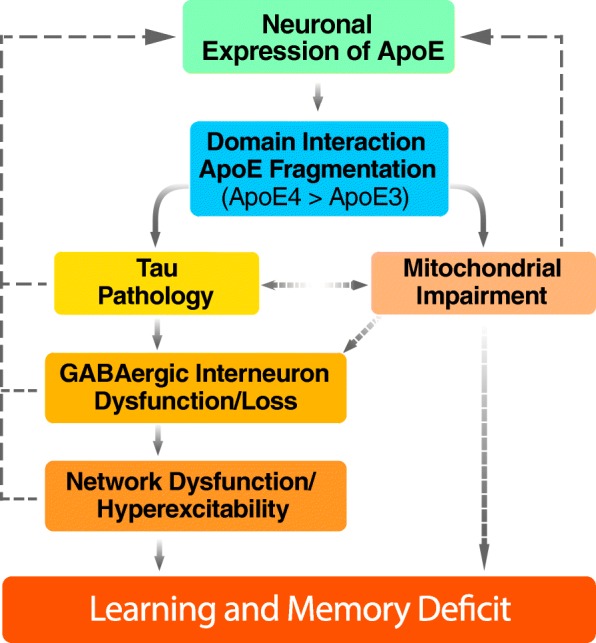Fig. 2.

Proposed working model of apoE4-induced GABAergic interneuron deficit and network dysfunction in AD. In response to aging, stress, or injury, apoE is expressed in neurons to facilitate neuronal repair and remodeling. However, higher apoE4 fragmentation due to its pathological conformation (domain interaction) leads to tau pathology and mitochondrial impairments. GABAergic interneurons in the hippocampus are selectively vulnerable to apoE4 toxicity, resulting in dysfunction and eventual loss. The inhibitory interneuron loss leads to network dysfunction and hyperexcitability, resulting in a positive feedback loop culminating in learning and memory deficits
